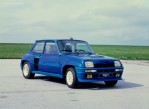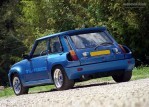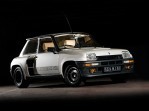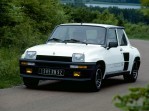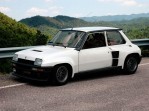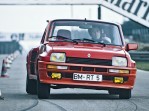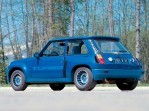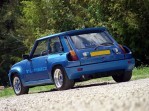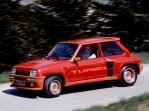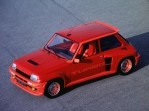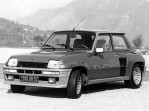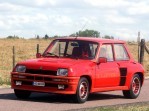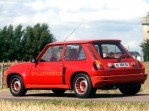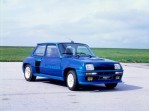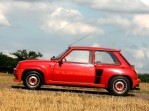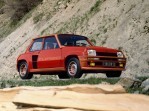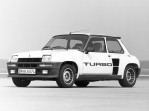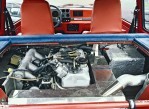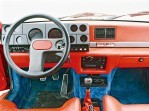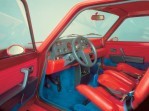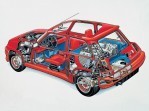Body style: Hatchback
Segment: Mini
Production years: 1980, 1981, 1982, 1983, 1984
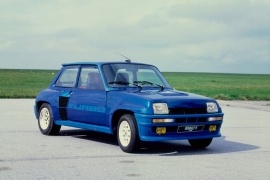 22 Photos
22 PhotosIn 1980, Renault introduced a special version of the Model 5 to compete in the World Rally Championship; it became the fastest car produced in France.
Renault had to reconsider its strategy after losing to Lancia in the World Rally Championship. So it launched a particularly daring project: transforming the economical R5 supermini into a genuine podium-capable racing car.
The project was ordered by Jean Terramorsi, Renault's VP for production cars, based on the existing model 5. Marc Deschamps from Bertone design studio came up with the idea of installing the engine behind the seats. Thus the idea of a mid-engine race car was born. After trials and errors, it came with the prototype in 1978. Due to the FIA's regulations, Renault chose the Alpine's 1.4-liter powerplant, which was mated with a five-speed manual gearbox carried over from Renault 30.
Moreover, thanks to extensive modifications and the addition of a turbocharger and a K-Jetronic fuel-injected system, the result was a 157 hp (160 PS) powerplant that sent the torque to the rear wheels. Unlike the standard 5, which featured a torsion-beam suspension system, the 5 Turbo used a multi-link system carried over from the Alpine A110.
These modifications were placed into a car styled by Marcello Ghandini from Bertone. Apart from the front fascia that was enhanced with a fat bumper, the most significant change was behind the B-pillars. There, the wider quarter panels featured air intakes for cooling the engine and feeding the turbocharger's intercooler.
Inside, Renault installed a pair of sports seats with high-bolstered areas and four-point seatbelts. Last but not least, the dashboard was upgraded to accommodate more gauges for the boost pressure, oil temperature, and other info required by a race car.
The final version came on the market in 1980. Thanks to its under seven-second 0-62 mph (0-100 kph) run and the top speed above 125 mph (200 kph), the Renault 5 Turbo became the fastest French car of its era.
RENAULT 5 Turbo 1980, 1981, 1982, 1983, 1984
- 1.4L Turbo 5MT (160 HP)
RENAULT 5 Turbo
1.4L Turbo 5MT (160 HP)
ENGINE SPECS - 1.4L Turbo 5MT (160 HP) | |
|---|---|
| Cylinders: | L4 |
| Displacement: | 1397 cm3 |
| Power: | 118 KW @ 6000 RPM 160 HP @ 6000 RPM 158 BHP @ 6000 RPM |
| Torque: | 155 lb-ft @ 3250 RPM 210 Nm @ 3250 RPM |
| Fuel System: | Turbocharged Multipoint Injection |
| Fuel: | Gasoline |
PERFORMANCE SPECS | |
|---|---|
| Top Speed: | 127 mph (204 km/h) |
| Acceleration 0-62 Mph (0-100 kph): | 6.9 s |
TRANSMISSION SPECS | |
|---|---|
| Drive Type: | Rear Wheel Drive |
| Gearbox: | 5-speed manual |
BRAKES SPECS | |
|---|---|
| Front: | Discs |
| Rear: | Drums |
TIRES SPECS | |
|---|---|
| Tire Size: | 220/55R365 |
DIMENSIONS | |
|---|---|
| Length: | 144.3 in (3665 mm) |
| Width: | 69.3 in (1760 mm) |
| Height: | 52.1 in (1323 mm) |
| Front/rear Track: | 52.8/58.3 in (1,341/1,481 mm) |
| Wheelbase: | 95.7 in (2431 mm) |
| Ground Clearance: | 5.7 in (145 mm) |
| Aerodynamics (Cd): | 0.35 |
WEIGHT SPECS | |
|---|---|
| Unladen Weight: | 2160.5 lbs (980 kg) |
| Gross Weight Limit: | 2777.8 lbs (1260 kg) |
FUEL ECONOMY (NEDC) | |
|---|---|
| City: | 19.6 mpg US (12 L/100Km) |
| Highway: | 22.4 mpg US (10.5 L/100Km) |
| Combined: | 25.6 mpg US (9.2 L/100Km) |
| CO2 Emissions: | 219 g/km |
